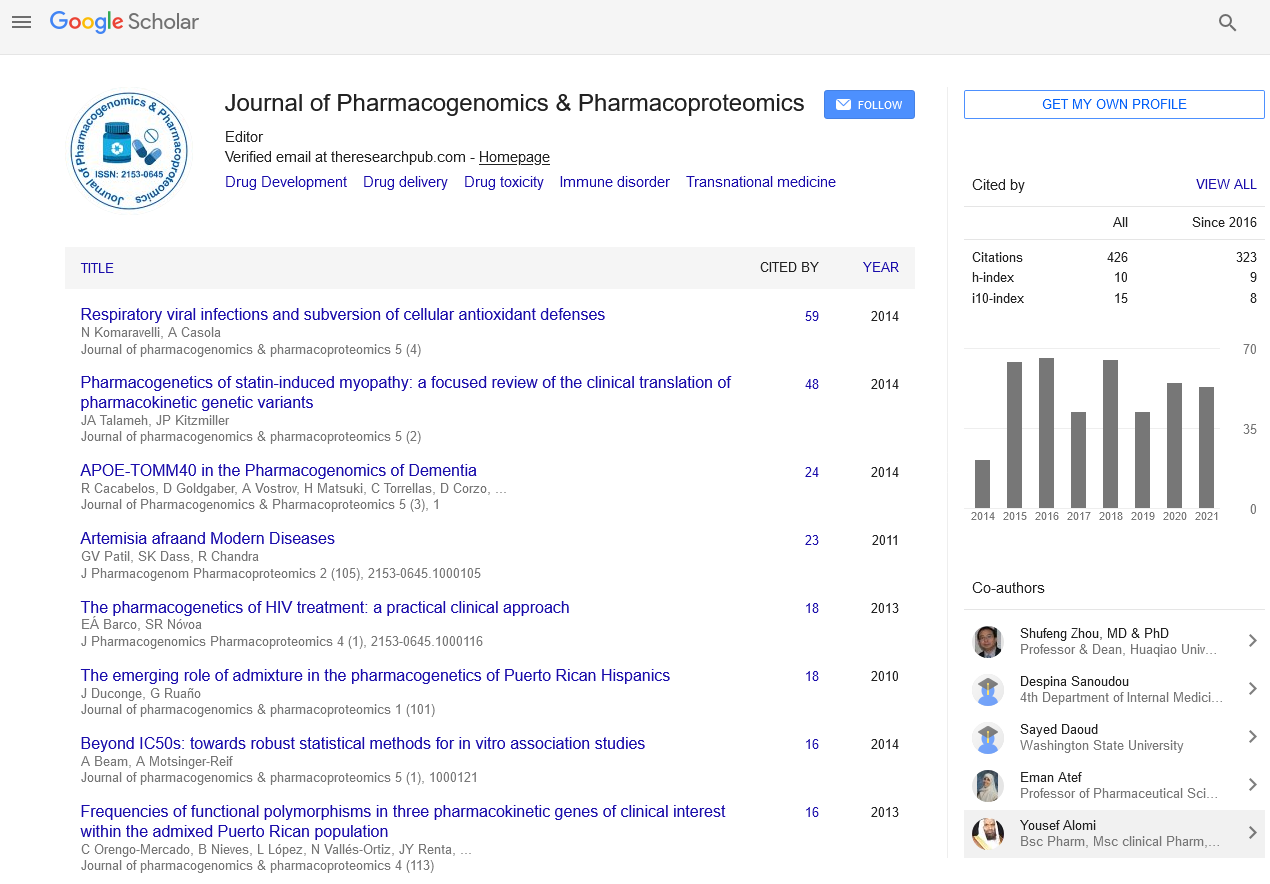Indexed In
- Open J Gate
- Genamics JournalSeek
- Academic Keys
- JournalTOCs
- ResearchBible
- Electronic Journals Library
- RefSeek
- Hamdard University
- EBSCO A-Z
- OCLC- WorldCat
- Proquest Summons
- SWB online catalog
- Virtual Library of Biology (vifabio)
- Publons
- MIAR
- Euro Pub
- Google Scholar
Useful Links
Share This Page
Journal Flyer

Open Access Journals
- Agri and Aquaculture
- Biochemistry
- Bioinformatics & Systems Biology
- Business & Management
- Chemistry
- Clinical Sciences
- Engineering
- Food & Nutrition
- General Science
- Genetics & Molecular Biology
- Immunology & Microbiology
- Medical Sciences
- Neuroscience & Psychology
- Nursing & Health Care
- Pharmaceutical Sciences
Abstract
Respiratory Viral Infections and Subversion of Cellular Antioxidant Defenses
Narayana Komaravelli and Antonella Casola
Reactive oxygen species (ROS) formation is part of normal cellular aerobic metabolism, due to respiration and oxidation of nutrients in order to generate energy. Low levels of ROS are involved in cellular signaling and are well controlled by the cellular antioxidant defense system. Elevated levels of ROS generation due to pollutants, toxins and radiation exposure, as well as infections, are associated with oxidative stress causing cellular damage. Several respiratory viruses, including respiratory syncytial virus (RSV), human metapneumovirus (hMPV) and influenza, induce increased ROS formation, both intracellularly and as a result of increased inflammatory cell recruitment at the site of infection. They also reduce antioxidant enzyme (AOE) levels and/or activity, leading to unbalanced oxidative-antioxidant status and subsequent oxidative cell damage. Expression of several AOE is controlled by the activation of the nuclear transcription factor NF-E2-related factor 2 (Nrf2), through binding to the antioxidant responsive element (ARE) present in the AOE gene promoters. While exposure to several pro-oxidant stimuli usually leads to Nrf2 activation and upregulation of AOE expression, respiratory viral infections are associated with inhibition of AOE expression/activity, which in the case of RSV and hMPV is associated with reduced Nrf2 nuclear localization, decreased cellular levels and reduced ARE-dependent gene transcription. Therefore, administration of antioxidant mimetics or Nrf2 inducers represents potential viable therapeutic approaches to viral-induced diseases, such as respiratory infections and other infections associated with decreased cellular antioxidant capacity.


